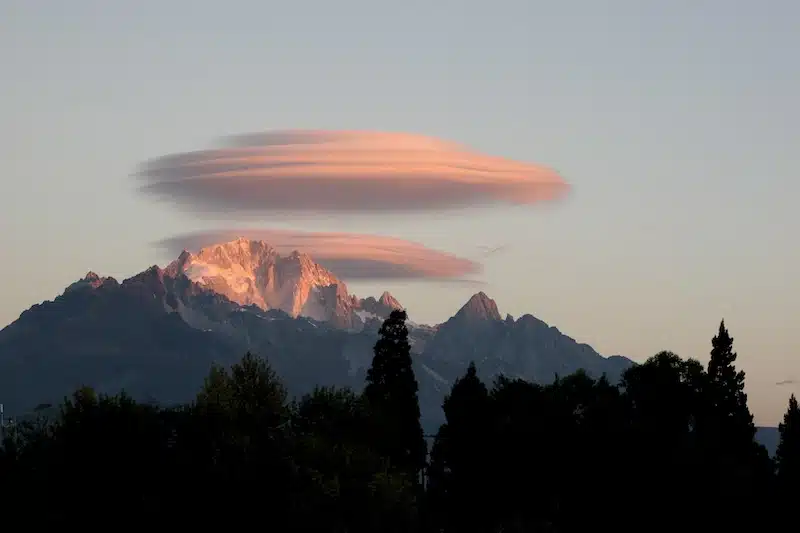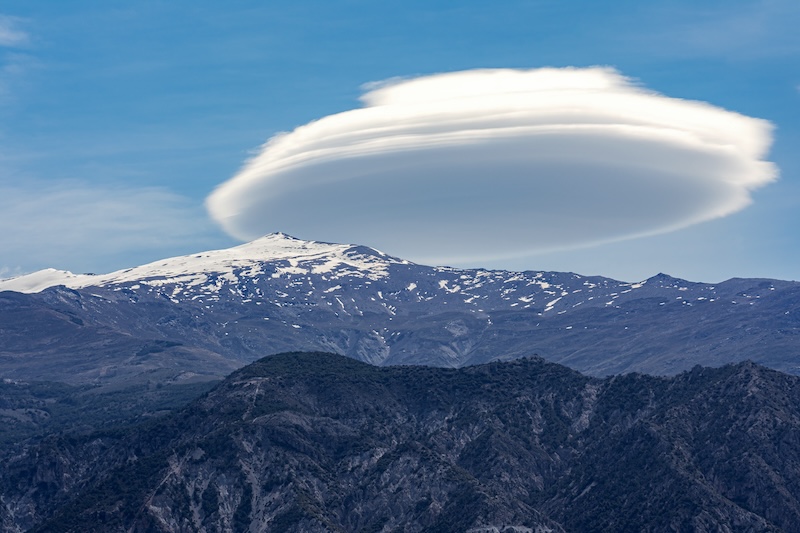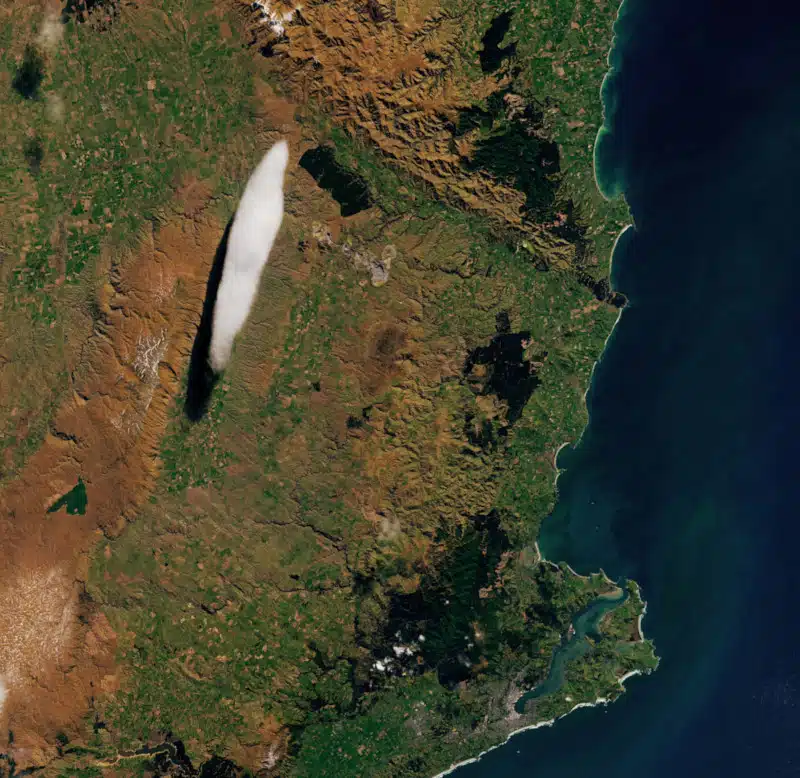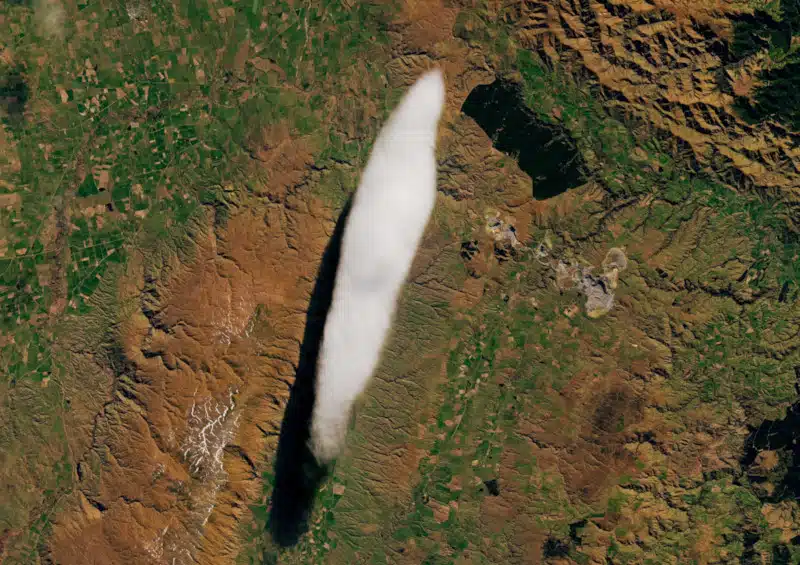The 2022 horror movie Nope had a unique antagonist—an alien creature disguised as an unmoving cloud. And though the film is a work of fiction, it turns out that UFO-shaped stationary clouds do actually exist in the real world. NASA’s Earth Observatory captured a formation that has been making the population of New Zealand’s South Island feel uneasy for almost a century. And while unusual, there seems to be a scientific explanation behind its odd behavior.
Known as the “Taieri Pet,” this unusual cloud has often been seen in the skies near Middlemarch, Otago. The formal name of this “pet cloud” is elongated altocumulus standing lenticular cloud (ASLC). During its latest sighting on September 7, NASA’s Operational Land Imager (OLI) on Landsat 8 captured it in a satellite image where it appears as a white, fluffy oblong shape. According to the Earth Observatory, witnesses both on the ground and in the air (from a side view, as opposed to the NASA’s aerial view) have described it as a static “huge stack of pancakes” or a “pile of plates” that hovers in the same spot.
Despite its ominous appearance, there is a reason for why these clouds look and behave like this. “Lenticular clouds form when prevailing winds encounter a topographic barrier, such as a mountain range,” writes NASA’s Earth Observatory. “Wind that is forced to flow up and over the mountains creates a kind of wave in the atmosphere. Air cools at the crest of the wave, and the water vapor it contains condenses into clouds. Conversely, falling air leads to warming and evaporation.”
Meteorologist John Law of New Zealand’s MetService further explains that strong winds from the northwest of the island pour over Rock and Pillar Range, which are characterized by being steep-sided and flat-topped, running almost perpendicular to the prevailing winds. “As the cloud forms on the crest of this wave, it remains almost stationary in the sky and is shaped by the strong winds blowing through it,” Law adds.
Due to their height, ASLCs such as the “Taieri Pet” can represent a risk to aviation. Their unusually low temperatures also cause ice to form on planes and, due to vertical currents that move up and down through the clouds, planes can experience severe turbulence if they were to fly through one. For those on the ground, “pet clouds” may signal extreme weather conditions in the atmosphere, and could unleash a variety of climatic conditions. “In some settings, lenticulars can signal that precipitation is on the way,” the NASA’s Earth Observatory concludes.
All around the world, there have been sightings of “UFO Clouds.”
These types of clouds are actually called lenticular clouds.

Photo: ChinaImages/Depositphotos

Photo: Miguel-Perfectti/Depositphotos

Photo: karnizz/Depositphotos
One particular lenticular cloud is a recurring one that appears time and time again in the same exact spot in New Zealand.

Photo: NASA Earth Observatory/Landsat
NASA’s Earth Observatory captured an aerial image of the elongated altocumulus standing lenticular cloud (ASLC) known as “Taieri Pet” over New Zealand’s South Island.

Photo: NASA Earth Observatory/Landsat
Due to its shape and stationary nature, the cloud is often mistaken for a UFO.
Ver esta publicación en Instagram
NASA Earth Observatory: Website
h/t: [LiveScience]
Related Articles:
Cloud Rings Around a Volcano Takes Top Prize in ‘Weather Photographer of the Year’ Contest
NASA Satellite Documents Parts of the Sahara Desert Turning Green Amid an Influx of Heavy Rainfall
Scientists Find Distant Gas Clouds That Will Help Reveal How Our Universe Was Created
Abstract Photo of the Bahamas Wins NASA’s Battle for the Best Earth Photo
